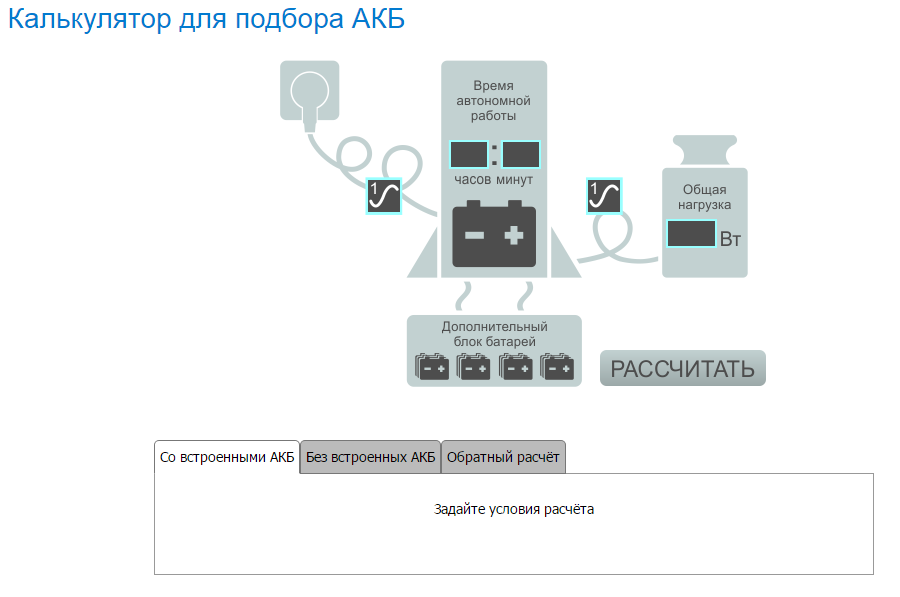power supply
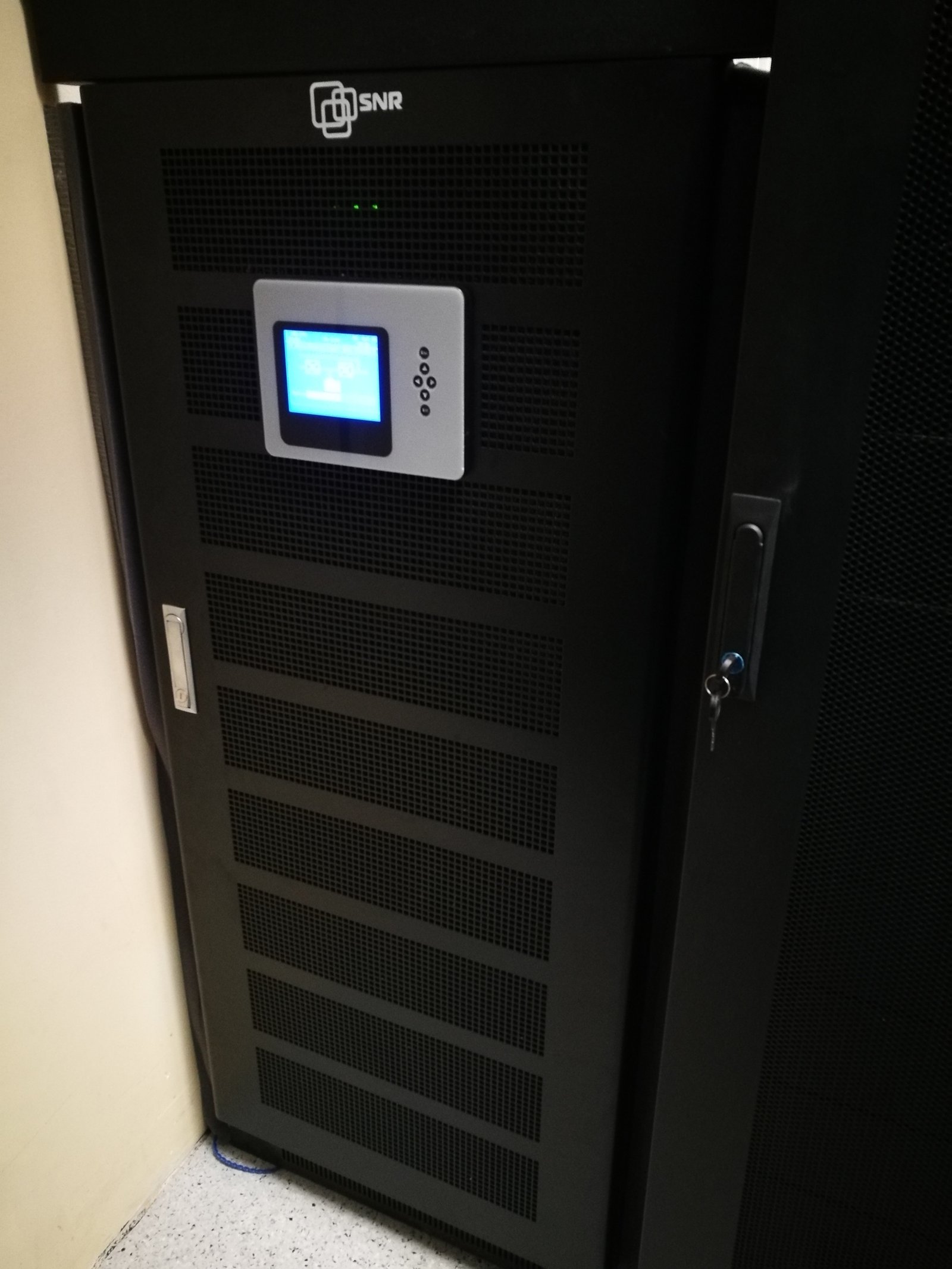
Uninterruptible power supply is an important element in the construction of complex systems, where you need a security guarantee against unforeseen power outages and other problems in the electrical network. Under the cut, we’ll tell you what criteria should be taken into account when choosing a UPS.
Now the market is packed with a lot of devices differing both in price and quality. To understand all this diversity is incredibly difficult. If the budget is limited, then it is necessary to approach the choice as responsibly as possible. Therefore, to begin with, it is worth responding to a few questions:
– How responsible equipment are you going to protect?
– What time will the autonomous operation of the equipment in case of voltage drop be optimal?
To answer the questions put it is necessary to understand what classes of UPS are now available, and to determine the main criteria that must be considered when choosing a UPS.
UPS classes
The classes presented in the UPS market differ from each other in behavior in different operating modes and schematics. Allocate:
– Backup or off-line UPS (BackUp),
– Linear Interactive UPS (Line-interactive),
– UPS with double conversion (on-line, double-conversion).
Off-Line UPS are considered the most simple and unpretentious. In the normal mode of operation from the grid, electricity is supplied to the input of such an uninterruptible power supply, and after the transit it is supplied to the main load. In the event of network failure (overvoltage and loss of voltage), the UPS automatically switches to battery operation.
Disadvantages of this scheme of work is a long switching of power to the batteries (from 4 to 10 milliseconds). In addition, when the UPS is running from the battery to the equipment, a sinus is used, not an ordinary sine but an approximated sinus.
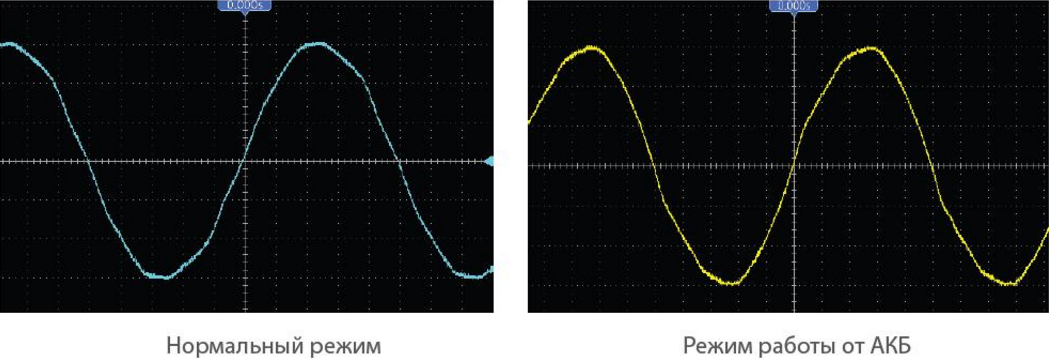
The next class of uninterruptible power supplies Line-interactive does not have any cardinal Differences from the scheme Off-line. In the event of an accident, the power is also switched to the battery, and is spent for this similar (from 4 to 10 milliseconds). The output also results in an approximate sine.
However, in the UPS of this class there is a transformer at the input, thanks to which it is possible to compensate for the same voltage drops. It is worth emphasizing that UPS class Off-line and Line-interactive are not designed to connect critical equipment.

When connecting critical equipment, it is recommended to use a UPS with double conversion Double conversion) or On-line UPS. The operation of such uninterruptible power supplies is arranged so that the incoming voltage is rectified by the rectifier. After this, the inverter converts the DC voltage into an AC voltage. Under such a scheme, the batteries are connected to the rectifier output and the inverter input, which provides an instantaneous transition (0 milliseconds) to battery operation.

Power ]
One of the most important parameters to pay attention to when choosing a UPS is the power of the connected equipment. Underestimation of this factor can lead to very disastrous results – the UPS can simply not cope with the load in the event of an accident.
The power applied to uninterruptible power supplies can be divided into:
– The total power is the sum of the active and reactive powers, and also the capacity of the UPS, Deviation from the shape of the current and voltage from the sinusoidal.
– The active power is the energy that the load takes from the energy source for further conversion of other useful energy.
To determine the power of the UPS, it is necessary to know the power factor of the connected equipment. In other words, the ratio of active power to total
Typically, the UPS’s technical characteristics indicate the input and output power factors. The input indicates the behavior of the UPS in relation to the electrical network. The power factor at the output is very important, because it shows the power received by the load
In order to calculate the power of the UPS, which will be needed to provide the load, it is necessary to take into account the sum of the nominal equipment consumption and the load when starting the equipment. Do not forget about the power reserve of 25%, that is, the UPS power should be 25% higher than the equipment’s power.
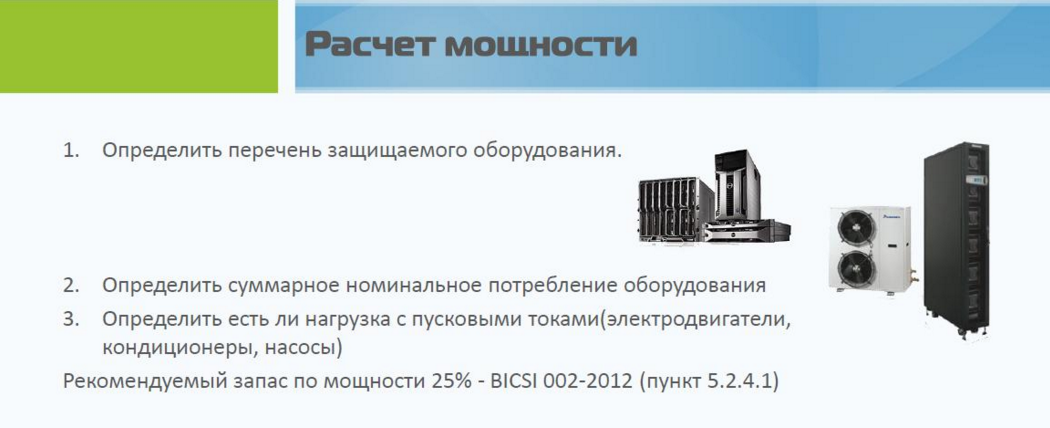
Efficiency UPS
Determining the efficiency of an uninterruptible power supply is very important, since this is the main indicator of the effectiveness of its use. Inefficient operation of the UPS leads to unreasonable costs.
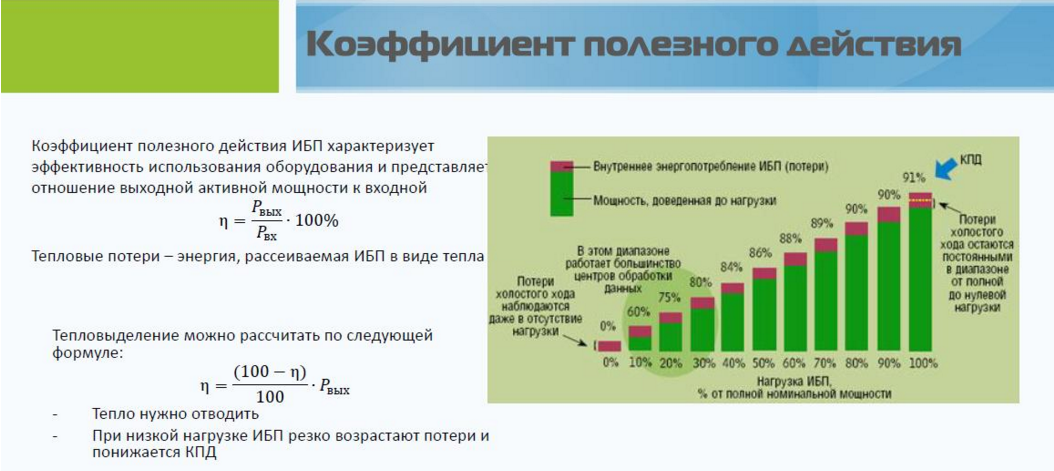
In addition, the efficiency determines how much heat in the environment the UPS allocates. This indicator is important when designing a server room. For example, if a small UPS is installed, it will not emit much heat. On the contrary, with a high power “uninterrupted” of several tens of kilowatts, heat generation will be large. To avoid overheating of the equipment it is necessary to somehow remove heat from the premises, and this is additional spending on powerful air conditioners. The result is that: the higher the efficiency of the UPS, the less heat will be released.
As an example, we present several options for the efficient and inefficient use of the UPS:
– In the first case, to a UPS of 800 W Connected equipment with a capacity of 50 watts. On self-maintenance, the UPS uses about 70 watts. We calculate the efficiency by the formula and get 42%.
– In the second case, with a load of 600 W, the efficiency of the UPS will be much higher – 89%. This option is more preferable and effective.
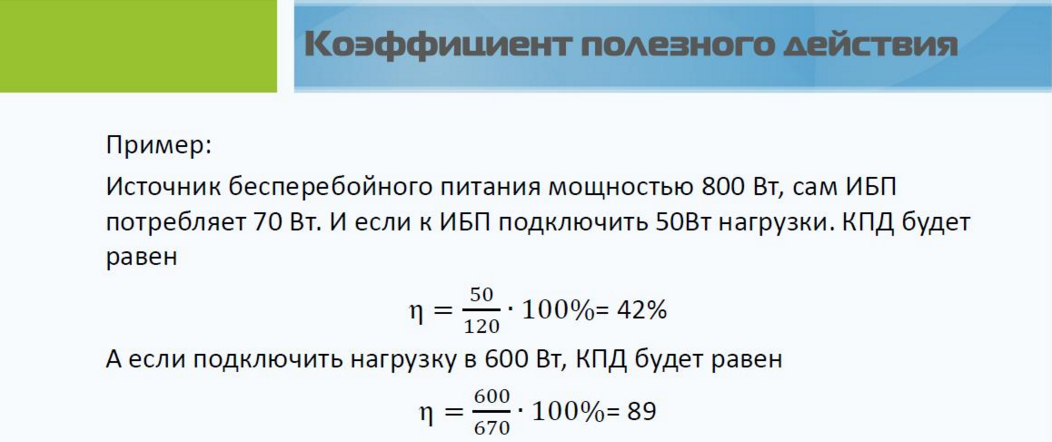
Battery Life
The battery life of the UPS is the time that an uninterruptible power supply will be able to support the operation of the equipment in the event of an emergency in the electrical network. The battery life is more dependent on the state of the batteries and the load being consumed.
When it is important for the network to just shut down the equipment for a short period of time, its choice can be stopped by a UPS with built-in batteries
] If there is a need for a much longer operation time of the equipment, then it is necessary to calculate the required battery discharge current. To calculate this indicator there is a special formula:
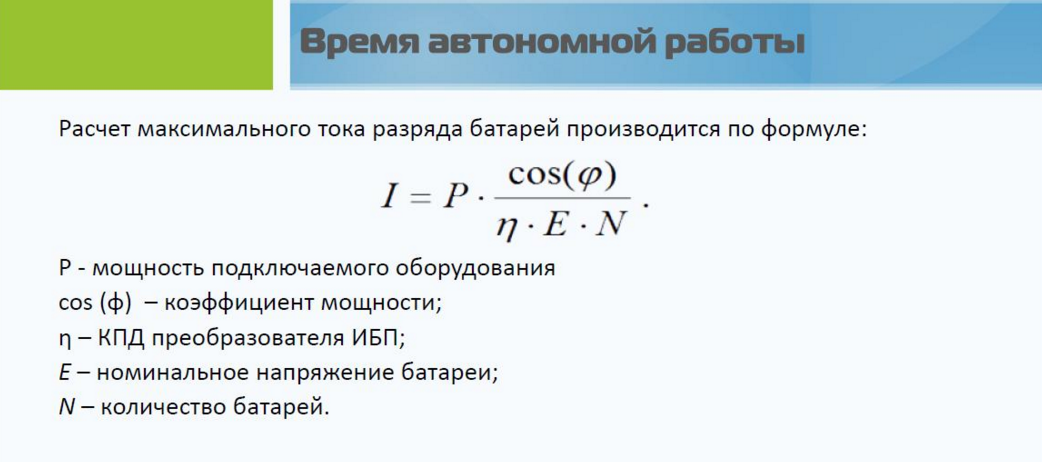
For those who do not have the time or the desire to bother with calculations and take into account a variety of technical and purely physical nuances on The site of our store has a convenient tool – the UPS calculator, with which you can determine all the necessary parameters.
